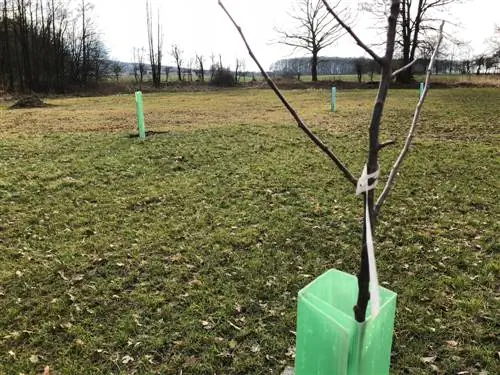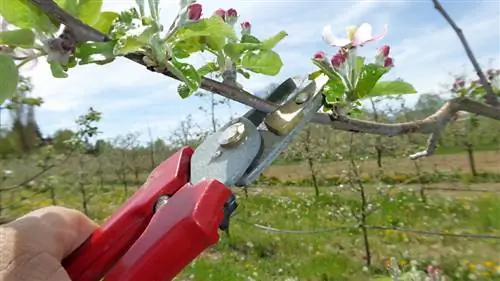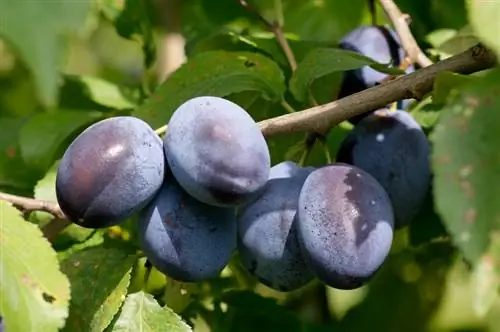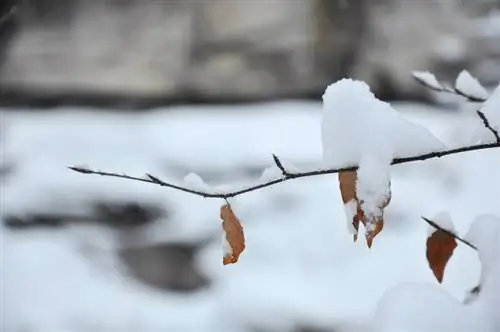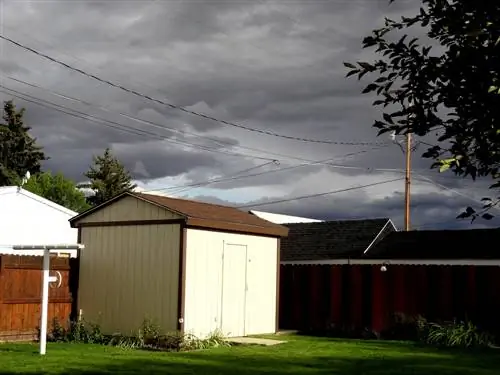- Author admin [email protected].
- Public 2023-12-16 16:46.
- Last modified 2025-01-23 11:21.
Freshly planted young trees should be secured using a stake or stake system until they have grown firmly. Tying serves as protection against falling over in storms or similar and is therefore particularly useful in exposed locations.
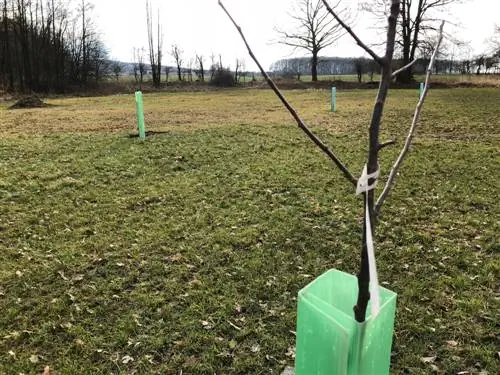
Why and how should you tie a tree?
Trees should be tied with stakes or stake systems to protect them from falling over during storms and to help the roots grow. To do this, either a single post or three posts are inserted in a triangle around the tree and secured with natural fibers or special straps. The fuse should be removed after two to three years.
Why tying up is so important
As long as the roots have not yet grown firmly, young trees should always be tied up. Otherwise, in poorly protected locations, the wind, reinforced by movements in the crown, could gradually loosen the roots and tear them out again and again. Tying it down prevents this loosening and thus helps the tree to grow. As a rule, the support can be removed after two to three years, although the connection must always be adapted to the growth of the trunk. Otherwise the trunk can become constricted, which not only has unsightly consequences.
How to secure a tree with stakes
There are different ways to secure a tree with stakes. The only important thing is that you don't add the supports until after planting - this could seriously damage the roots of the young tree. Instead, the stakes are buried directly when planting. You should also use thick cords made of natural materials to secure it. Coconut fibers, for example, are very suitable.
Attach tree to single post
Probably the simplest method is to plant a stake - typically made of wood or metal - together with the tree, whereby the support aid should be driven deep into the ground with a hammer and reach at least to the end of the trunk. Loop the coconut fiber cord around the trunk and post in the upper third. When doing this, make sure that the tension is neither too loose nor too tight - the tree and pole must not bend under the pressure, but must stand straight. Ideally, wrap the area on the trunk with burlap to protect the bark. It is even easier and safer to use special tree straps (€12.00 on Amazon) made of plastic, which are attached with a buckle.
Three-point securing for larger trees
If the tree to be planted is a bit larger, a single stake is often no longer sufficient to secure it. Instead, insert three stakes into the planting pit in the shape of a triangle with the tree in the middle. It is secured with a tree strap or a coconut fiber rope as described in the section above. Don't forget to adjust the security as the tree grows.
Tip
You can secure a small bush with little effort by using old branches as a support and growth aid. This support will fall apart on its own over time, but be careful: only use stable, dead branches. Fresh wood can sometimes sprout and take root again.

